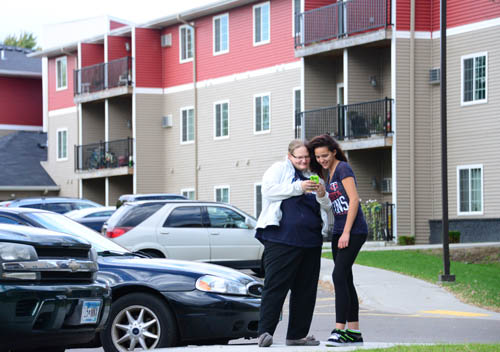When the 2040 Housing Policy Plan was adopted in December 2014, the Council indicated it would amend the plan in 2015 to include additional information. The Council approved the amendment in July.
The housing plan is the region’s first in nearly 30 years. It provides guidance to local officials as they address housing and housing affordability in their local comprehensive plans.
It also reflects new federal guidance on “affirmatively furthering fair housing.” It promotes programs and activities related to housing and urban development in areas of opportunity as well as areas in need of revitalization.
Communities include “housing element” in their local plans
 State law requires local comprehensive plans to include a housing element. This plan component describes how communities will plan for housing opportunities to meet local housing needs, including housing for households with low and moderate incomes, and how they will turn plans into reality. The Metropolitan Council is charged with reviewing those local plans.
State law requires local comprehensive plans to include a housing element. This plan component describes how communities will plan for housing opportunities to meet local housing needs, including housing for households with low and moderate incomes, and how they will turn plans into reality. The Metropolitan Council is charged with reviewing those local plans.
Council officials say the amendment will help local communities plan by clarifying both the need for affordable housing and how the Council reviews the housing element of local comprehensive plans.
“The Council developed the language in this amendment in partnership with working groups made up of city and county staff, elected officials, developers, and housing advocates,” said Libby Starling, the Council’s Manager of Regional Policy and Research.
“These are people who well understand the kind of guidance that would be helpful to local planners, and appreciate the need for and challenges of creating housing opportunities for people of all incomes and life stages,” Starling said.
Housing Policy Plan amendment includes
-
Consistent expectations about what communities must include in the housing element of local comprehensive plans.
-
The Affordable Housing Need* for the region overall in the 2021-2030 decade, and the allocation of affordable housing need for each metro area community.
See the amendment, as adopted by the Council on July 22 (pdf).
Starling says information about housing need will be included in System Statements that metro area communities will receive from the Council later this year. The System Statements will inform local planning and launch the local planning process, so that local and regional plans are consistent.
Growing need for affordable housing
The need for housing that residents in the region can afford continues to grow. Today, about 265,000 low- and moderate-income households pay more than 30% of their household income on housing; of those, more than half spend at least half of their income on housing. So far this decade, only 3,200 new affordable units (rental and ownership) have been built.
The Council forecasts that between 2021 and 2030, the region will have an additional 37,400 low- and moderate-income households that will need housing they can afford. The Council has further broken down the regional need of 37,400 households by income, showing the greatest housing need among the lowest income households.
-
18,900 units for households earning at or below 30% of the area median income (AMI), or less than $26,000/year for a family of four.
-
9,450 units for households earning from 31% to 50% of AMI (up to $43,300 for a family of four).
-
9,550 units for households earning from 51% to 80% of AMI (up to 65,800 for a family of four).
Affordable housing would allow these households to pay no more than 30% of their income on housing. To determine a community’s share of the regional need, the Council considers forecasted household growth, the amount of existing affordable housing, and the ratio of low-wage jobs to low-wage workers.
“Two-income households, with both wage earners working full time at minimum wage, have a tough time finding housing they can afford,” said Starling. “There is a significant gap between income and housing affordability. To remain economically competitive, we need housing that meets the needs of the region’s workforce.”
*NOTE: Housing “need” assesses the need for affordable housing in the region and communities, as prescribed by statute—in other words, the gap between supply and demand. Housing “need” is not the same as the “goals” that the Council negotiates with communities as part of the Livable Communities program; nor does it reflect the availability of resources for affordable housing development.